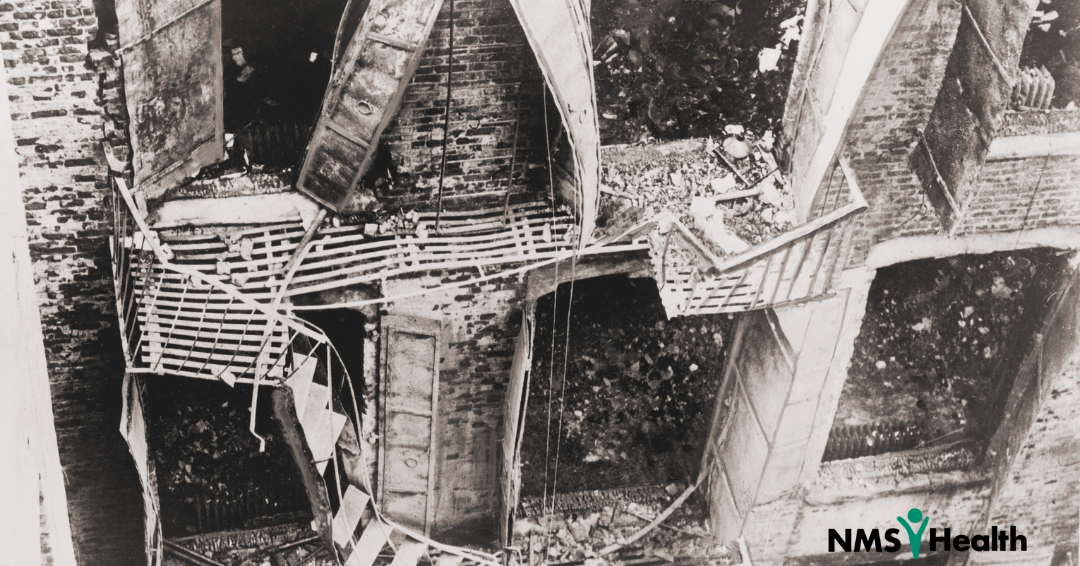At the turn of the century, the shirtwaist became a mainstay of women’s fashion. Women abandoned the confines of the corset, for the simpler, more functional, menswear inspired design. The button-down blouses were not only a fashion movement, but a symbol of women’s newfound independence. In 1910, nearly 20% of the labor force were women. Shirtwaists allowed for women to move comfortably while working outside of the home where, with their own jobs and wages, women were no longer dependent on the men in their lives. Many women took to working in factories, such as the Triangle Shirtwaist Factory.
Due to their popularity, the shirtwaist industry was booming and competitive. In New York City alone, there were nearly 500 operating textile factories. The Triangle Shirtwaist Factory, was one such factory, operating in Manhattan. The Triangle Shirtwaist Factory was located on the 8th, 9th, and 10th floors of the Asch building in Greenwich Village.
Here workers, many of them immigrant women, worked seven days a week, for as many as 13 hours a day. The days were long and arduous. Workers hunched over sewing machines and cutting tables, working nearly elbow to elbow. The building itself did not offer appropriate heating and cooling, ventilation, or overhead sprinklers. Steel doors were used to lock in workers to prevent theft and taking breaks. Women often had to ask permission from supervisors to use the restroom. Additionally, the company stored industrial chemicals and flammable products on the work floor amongst the fabric scraps under work tables and hanging paper templates.
An eleven-week strike of predominantly women shirtwaist workers occurred in 1909. The strike, also known as the Uprising of the 20,000, was the largest strike by women to that date. The Triangle Shirtwaist Factory workers joined the cause in September 1909. They sought increased wages, union representation, and 52-hour work weeks. The owners of the factory, Max Blanck and Isaac Harris, were staunchly anti-union and were among the few factory owners who sought to intimidate protestors and prevent unionizing. While they later agreed to pay increases and shorter hours, they would only employ non-union members, and did not adequately address safety concerns.
On March 25th, 1911, a devastating fire ripped through the Triangle Shirtwaist Factory. Workers found exit doors locked. Narrow, dimly lit staircases were jammed, and the single fire escape collapsed, unable to support the weight of the fleeing workers. The fire spread quickly, with many women and some men trapped inside. Many died of smoke inhalation, others from the flames themselves. Workers were crushed while struggling to open the locked doors. Fire department ladders could only reach to the sixth floor unable to help those who were scaling the side of the building. Panicked, fearing no escape, many resorted to jumping from the windows of the ten-story building. The fire lasted only 18 minutes, but 146 lives were lost that day.
More than 350,000 outraged people participated in a funeral march for those who died that day. The collective outrage from the fire also led to progressive labor reform. In October 1911, New York passed the Sullivan-Hoey Fire Prevention Law as a response. It required factory owners to install sprinkler systems, established the New York City Fire Prevention Bureau, and expanded the powers of the fire commissioner. This new push for workplace safety laws would set the stage for regulations nationwide.
From 1911 to 1914 there would be 36 new laws passed regarding labor reform. The American Society of Safety Professionals was founded as a direct response to the tragedy just months after it occurred. Two years after the fire in 1913, the National Safety Council was founded, and the Second Safety Council held a session on fire prevention. The United States Department of Labor was formed in 1915, issuing its first set of regulations.
Among the witnesses of the fire was Frances Perkins, who would later become the first female Secretary of Labor. Her memory of that day inspired her to push even harder to protect American workers. She was instrumental in developing and implementing the Social Security Act and the Fair Labor Standards Act. Perkins herself described the Triangle Shirtwaist Factory fire as “a never-to-be-forgotten reminder of why I had to spend my life fighting conditions that could permit such a tragedy.”
Over a century later, the tragedy that occurred in the Triangle Shirtwaist Factory is remembered as the spark that incited real change in workplace health and safety. Sadly, it took the lives of 146 people to reimagine the workplace of the early 20th century.


